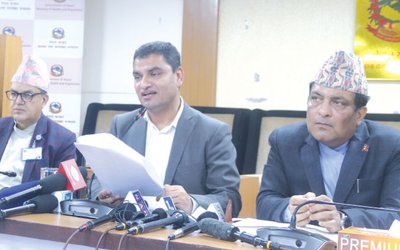
Despite making certain progress, there is still the great gap in the child health which costs lives of hundreds o children. Nepal ranked 124 on World Vision’s global index. According to aid agency, Nepali children fall through the cracks every year, despite progress. The report exposes the gap between health rich and health poor.
A ‘devastating’ gap exists between the health rich and health poor in every country, contributing to the deaths of thousands of children every day, a recent report released by World Vision finds.
A Global Index of Health Inequality for Children assesses 176 countries around the world according to the size of the gap between those who have access to good health and those who don’t. Nepal is ranked a surprising 124 on the global index.
“It’s sad that though Nepal is making progress in Millennium Development Goal, many children continue to pay the price for the great gap in health, with their lives,” said Pushkar Khati, World Vision’s Child Health Now Campaign Specialist.
“Over the past 10 years, Nepal has made a lot of progress – the number of children under the age of five dying every year has fallen dramatically. But it’s still high –under-five mortality rates is 54 deaths per 1,000 live births, respectively. At this mortality level, one in every 19 does not survive to his or her fifth birthday.” said Khati.
“In achieving this and tackling poverty and poor health, Nepal government and organisations have reached those who are easiest to get to, but in many cases this has meant a devastating increase in the gap between the health rich and poor, with the most vulnerable children bearing the brunt.”
The report and Global Health Gap Index was released by World Vision to mark the Close the Gap campaign, which this week saw hundreds of supporters in Far Western region of Nepal asking political leaders and decision makers to do everything possible to achieve Millennium Development Goal 4 , tackling child health.
The campaign mobilised local community people during this week. 45 community events took place also marking the festival of Teej like song competitions, street dramas and rallies in Doti and Kailali Districts where more than 5000 people took part.
The Global Health Gap Index, in World Vision’s The Killer Gap report, ranks 176 countries based on four criteria measuring health outcomes. World Vision launched a week of mobilisation – “Close the Gap” – in the Far Western region of Nepal, with public events to call on leaders to help close the health gap Close the Gap is part of World Vision’s five-year Child Health Now campaign, aiming to end preventable child deaths.
Child Health Now is World Vision’s global campaign to end preventable deaths of children under five. Globally, over 7 million children under the age of five die each year from preventable causes, like birth complications and infections, diarrhoea and pneumonia.
According to a press release issued by World Vision , The underlying cause of one third of these deaths is malnutrition. Addressing child mortality means improving the health of both mothers and children. Through Child Health Now, World Vision is calling on the international community to meet its Millennium Development Goal (MDG) commitment to reduce maternal and child deaths by 2015 - specifically: MDG 4, to reduce child deaths by two-thirds by 2015 and MDG 5, to reduce maternal deaths by three-quarters by 2015.
- FORMER KING GYANENDRA: Bating Constituional Monarchy
- Apr 28, 2025
- NC-UML COALITION: In Turmoil
- Apr 27, 2025
- TEACHERS ON STRIKE: Students' Future In Jeopardy
- Apr 25, 2025
- NEPAL-THAILAND: Joint Business Council
- Apr 13, 2025
- BIMSTEC SUMMIT: Nepal’s Stand
- Apr 11, 2025















